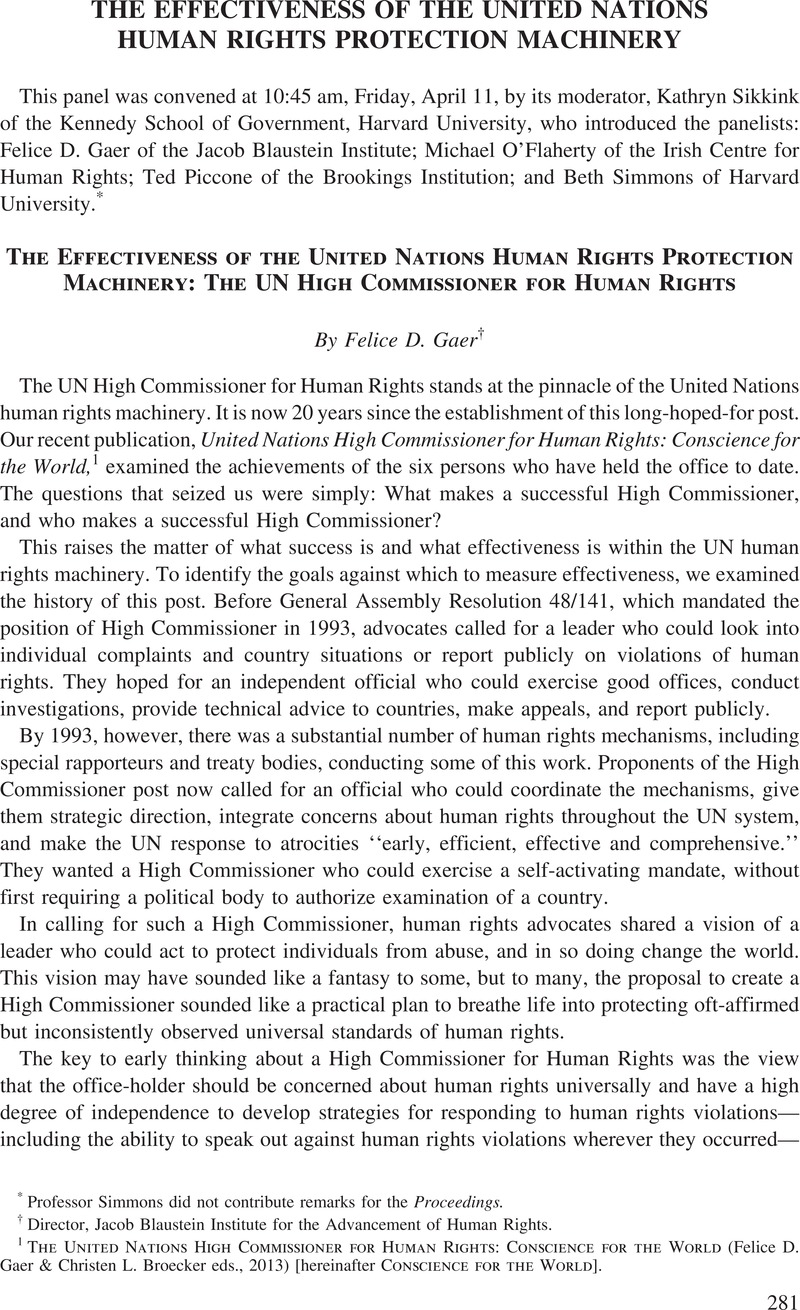No CrossRef data available.
Published online by Cambridge University Press: 20 January 2017

* Professor Simmons did not contribute remarks for the Proceedings.
1 The United Nations High Commissioner for Human Rights: Conscience for the World (Felice D. Gaer & Christen L. Broecker eds., 2013) [hereinafter Conscience for the World].
2 Michael Ignatieff, Rights Inflation and Role Conflict in the Office of the High Commissioner for Human Rights, in id. at 33–44.
3 Stephanie Kleine-Ahlbrandt, The High Commissioner, OHCHR, and China, 1998–2005: Challenges and Achievements, in Conscience for the World, supra note 1, at 269–91.
4 Karinna Moskalenko, Maria Goldman & Catherine A. Fitzpatrick, The High Commissioner for Human Rightsin the Russian Federation, in Conscience for the World, supra note 1, at 331–48.
5 Roberta Cohen, The High Commissioner for Human Rights and North Korea, in Conscience for the World, supra note 1, at 293–310.
6 Felice Gaer, The High Commissioner and the Special Procedures: Colleagues and Competitors, in Conscience for the World, supra note 1, at 133–56.
7 See also Michael O’Flaherty, The High Commissioner and the Treaty Bodies, in Conscience for the World, supra note 1, at 101–20.
8 Navi Pillay, Address by the High Commissioner at the Jacob Blaustein Institute for the Advancement of Human Rights, in Conscience for the World, supra note 1, at 68.
9 SeeDavid Kaye, Human Rights Prosecutors? The High Commissioner for Human Rights, International Justice, and the Example of Syria, in Conscience for the World, supra note 1, at 245–65.
10 Samantha Power, Chasing the Flame: Sergio Vieira de Mello and the Fight to Save the World 523 (2008).